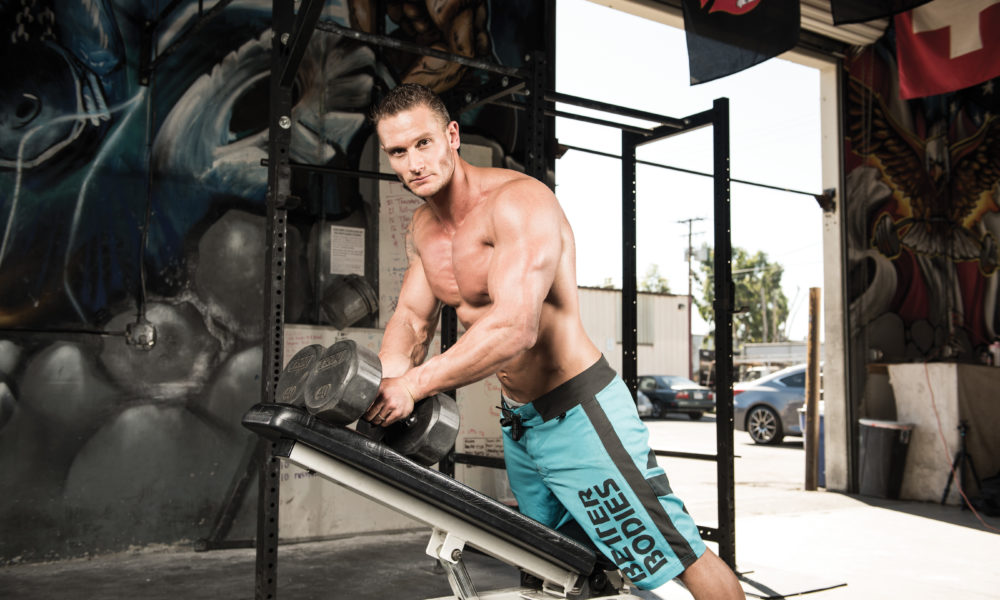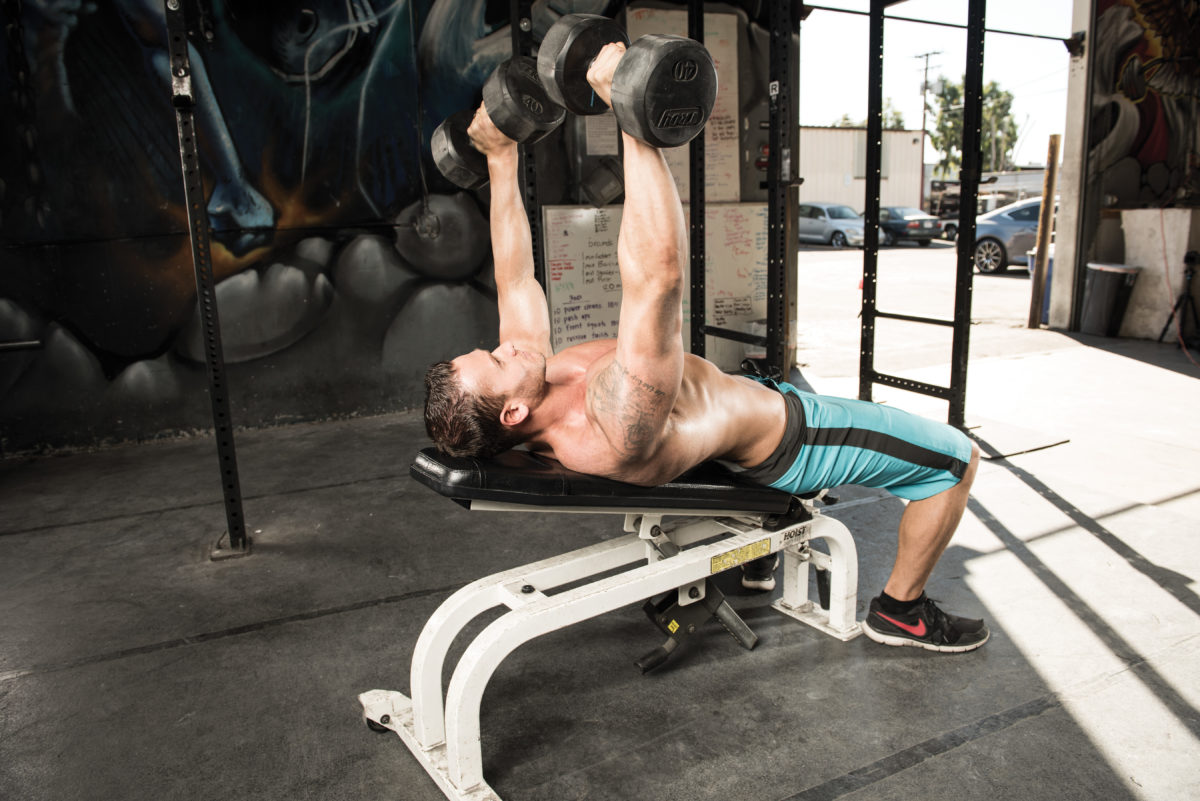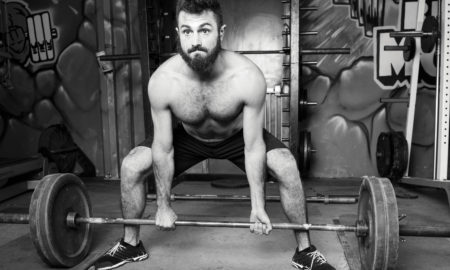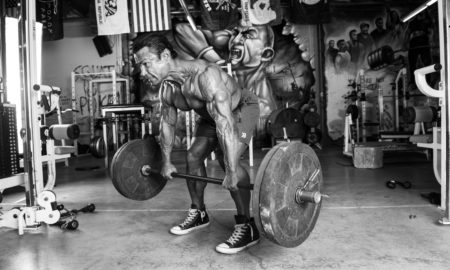

What you absolutely need to know for building huge pecs
By Vince DelMonte
When it comes to training pecs, the difference between progress and wasting your time will be in understanding the fundamentals. This second part of this article was written not to be the final word on chest training but to clarify the essentials—and most importantly to separate fact from fiction.
Inner/Outer Pecs
One mistake during exercise selection is the belief that certain movements can emphasize inner or outer pecs. This misguided notion was perpetuated due to the fact that some exercises can give the feeling that certain fibers are under more stress than others. The most rational explanation for this phenomenon is that many exercises, even those that look almost identical on the surface, offer variable resistance profiles. For example, most chest flye machines offer far more resistance near the end of the shortened part of the range of motion (ROM) versus lying dumbbell flyes, which are far heavier during the lengthened (or “bottom”) part of the ROM. This can lead to a much different muscular sensation based on where most of the resistance is located relative to the muscles. In truth, because inner and outer pec fibers run parallel to each other, it is a mechanical impossibility to separate the function of one fiber on the inside to another on the outside.
Incline Versus Decline
Of significant importance to training pecs is ensuring variations of resistance by changing the plane of the load relative to your shoulder joint. This is most commonly accomplished by inclining or declining a bench or changing the line of the resistance usually using cables in standing or seated variations.
The most important consideration when choosing inclines and declines is that while inclines offer slightly more upper-pec involvement, they can sacrifice lower-pec stimulus. Because the majority of pec fibers align horizontally across, and depending on rib-cage depth and shape, a flat press or slight decline offers significant involvement of the upper pec without sacrificing the lower pecs.
Keeping this mechanical reality in mind, it is still imperative to create several variations of angles using inclines and declines. However, they should be utilized to spread joint wear and offer slightly different motor recruitment and stimulation. In short, the more you incline the more front delts get recruited relative to pecs and the fewer lower-pec fibers are activated. Try not to emphasize inclines too much or incline too high too frequently if you wish to develop your pecs to their fullest potential.
Strategically Selecting Chest Exercises
We all know that variation of exercises and workouts is a must for consistent development. Instead of selecting exercises arbitrarily, you should now be able to better comprehend each exercise and strategically use them to your advantage.
One aspect not yet explained adequately might be the most important for variation: resistance profile, or where the resistance is heavy versus where it is light. Awareness of resistance is a tool that can significantly enhance your gains in the gym.
While most trainees are worried about a full range of motion, the reality is that the vast majority of chest exercises offer a far different resistance during each part of the motion. For example, a dumbbell bench press offers more resistance at the bottom (or lengthened end) of the ROM and zero resistance at the top (or shortened end). Contrast this to a cable crossover while standing in between a wide cable setup. There is zero resistance at the lengthened end of the ROM and far more resistance during the shortened end. Ultimately, there are infinite variations that lie in between these two examples that can be used effectively.
Here are some common examples of poor exercise selection and mistakes with execution.
Dips: The traditional dip exercise is essentially an extreme decline where the arms are forced in the sagittal plane (at the side, far away from the transverse plane) and the pec fibers are not in line to do much work. The shoulder-joint capsule is stressed at the bottom of the motion more often than not, mostly due to overextending beyond its active ROM.
Try this instead:
Decline Cable Presses: Using a steep decline bench (20 to 45 degrees) facing a narrow cable tower, line the cables up so that your elbows are in line with the cable at about 30 to 45 degrees of abduction at your shoulders (will vary with individuals). This path of motion and resistance profile significantly decreases risk on your glenohumeral joint and involves far more pec activity than its dip counterpart.
Cable Flyes: Far too many people will attempt to create inclines but set the cables too low and are standing too far in front of the cables to adequately stimulate the pecs. Other errors include not stabilizing the trunk or hips enough, protracting the shoulders too early or too much, and not lining up the path of the arm with the plane of the cable.
Try this instead:
Standing Cable Crossovers With Staggered Feet: Set the height of the cables not far below the height of your shoulder and following the path of motion in line with the direction of the cables (think about a windshield wiper staying on a windshield). Your hands should end up below your shoulders at the beginning of the movement and above your shoulders at the completion of the concentric phase. Always make sure that your torso is adequately stabilized using the muscles of your trunk and making certain no motion takes place at other joints, especially at your neck..
Dumbbell Flyes: Although there is nothing wrong with free-weight exercises, chest exercises using free weights all share very similar resistance profiles. One example on the extreme end would be dumbbell flyes and their variations. Because the resistance is non-existent at the shortened end of the ROM (at the top) and so high when the pecs are at their longest length (where they are weakest), acceptable execution of this exercise is not only difficult and risky on your joints, but also redundant if free weights comprise the rest of your chest program.

Try this instead:
Seated Chest Flye Machine: You may also use seated “cable presses” with a narrow cable tower at various angles and distances as a means of providing a changing resistance through the ROM.
Some of the other common mistakes seen in the gym often involve several combinations of what was outlined earlier: lack of control, moving too fast (while not yet establishing control), using too much or too little ROM, protracting the scapula too early or too much, not paying enough attention to breathing, flexing the cervical spine (lifting your head off the bench), using too much incline or too many incline variations to stimulate the pecs optimally, and failing to strategically select exercises based on where the resistance is in the ROM.
Whenever you are looking to change your chest routine, use these fundamentals as a guide to ever-increasing gains in the gym. Always be wary of those who preach complex advanced techniques, promising results that end up being totally unrealistic. Those who practice patience, strategize, and pay attention to their execution are those who ultimately thrive. IM






















You must be logged in to post a comment Login